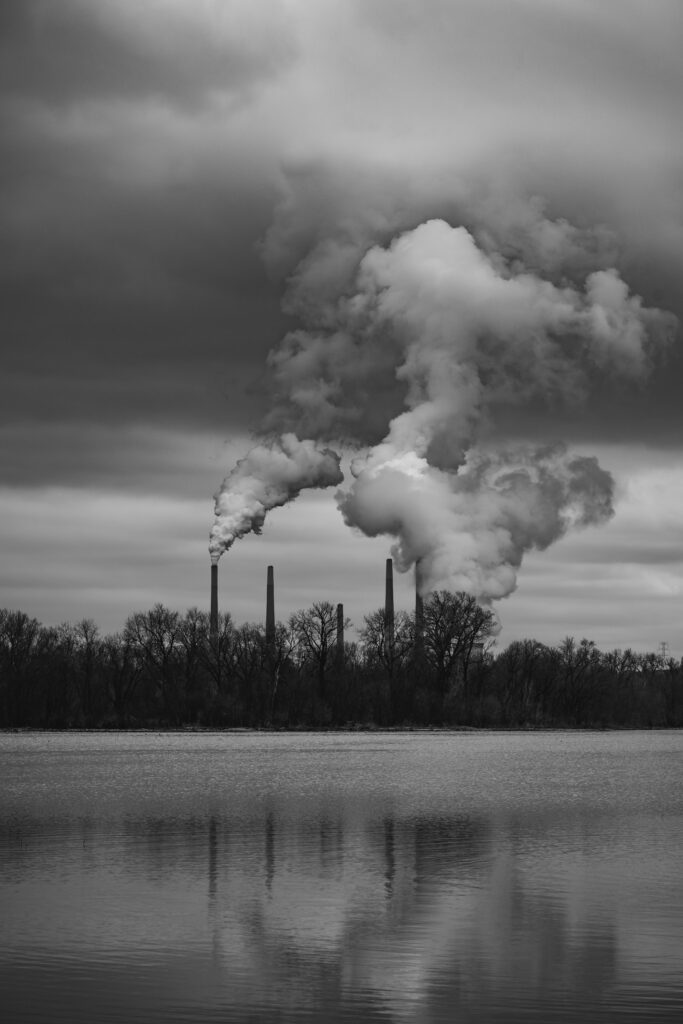The lively contributions to this essay forum indicate an unfolding transdisciplinary research conversation related to religion and energy. Some key insights have emerged, as well as remaining questions, indicating openings for further inquiry.
Relationship Between Energy Concepts and Capitalism
A key insight offered in each of the essays involves the ways common correlatives to energy like energi, kallpa, kamaqen and the electromagnetic fields of electrical theologies both exceed and remain appropriable within extractive capitalism. Such conclusions are reflected in the field of energy humanities as well. For example, Allen MacDuffie has emphasized that while certain understandings of energy have been interpreted as opposed – like energy as “usable resource” (fuel) and energy as “ambient agency” (vibe, resonance, spirit, or atmosphere) – these different meanings often have functioned in concert with one another in extractive capitalism. He notes how historical elisions of energy as dispersed agency, infinitely circulating, have infused energy with connotations of finite fuel, a combination that has been strategically employed to reify fuel resources as unlimited.[1] Jamie Jones furthermore suggests that the modern concept of energy has developed to do precisely this work: to mediate between distributed agency and fuel, thus obscuring sources of production from consumption, hiding the injustices of extraction and the exploitation of labor from energy consumers.[2] As Pískatá demonstrates in the Mongolian context, energi resists the constraints of modern energy as fuel and yet is employed in service of modern capitalism to recharge labor. Her essay responds to this danger by foregrounding exploited labor and exhausted bodies of extractive capitalism, thus refusing to let energi’s distributed agency obscure the material finitude of fuel in bodies or land.

Translatability
Orospe Hernández similarly examines social processes of both fuel extraction and modes of resistance grounded in visions of distributed agency. In doing so, Orospe Hernández demonstrates the importance of closely attending to both intercultural translatability and incommensurability. He emphasizes the ways that the Quechua terms kappa and kamaqen, often associated with or translated as “energy,” resist such equations by remaining “deeply embedded in ethical obligations and relational exchanges with the land.” His essay demonstrates the flattening effect of translation, which by implied associations with “life force” and “animating essence,” erases what does not translate well: namely, the ways kappa and kamaqen not only animate, but are themselves nurtured by a community through a socially regulated and ritually supported flow of reciprocity.
Religion as a Motivating and Cultural force in the Energy transition
While Pískatá’s and Orospe Hernánez’s essays focus primarily on conceptual ambivalences in sites of extraction or energy production, Boyer turns our attention to the important role of civic religion in moral deliberation about energy transitions. While emphasizing the dominant role fossil fuel religion has and continues to play in American life, quoting Durkheim, he calls readers to “take heart…that religion itself constantly transforms– ‘that there is something eternal in religion that is destined to outline the succession of particular symbols in which religious thought has clothed itself.’” While noting the multiple ways electricity has been enchanted, he finds the contemporary civic religion of electricity insufficient to displace that of oil. Consequently, Boyer calls for a higher voltage energy theology: “why not work at enchanting electricity further?” while continuing to disenchant oil as an “instrument of divine will.”

Remaining Questions
Such a call for enchantment as a collectivizing force to support an energy transition provokes and opens questions even as it provides organizing clarity:
what model of salvation or redemption would or should function in such a religion? What model of divinity or the sacred would correspond? What different affects, relations, social structures, and ways of being in the world would such a religion encourage? What role would justice play in such a religion? Would it lift up patron saints? Who would be included?
More broadly, the study of religion and energy calls for further theorization around intercultural commensurability. Issues of translation with histories of colonialism, Orientalism, and appropriation are certainly relevant for religious studies. But fraught questions also remain from the perspective of energy humanities. A key insight from Cara Daggett’s genealogy of energy is that modern energy is not a universal, transhistorical phenomenon but a culturally specific reflection of imperial aims, theologies of work and waste, and progressive temporalities. Indeed, she argues, “[t]reating energy as an object of timeless human desire has obscured the historical particularity of energy as we (and ExxonMobil) know it.”[3] In the end, Daggett emphasizes that different energy epistemologies are needed to contest the ruling epistemology of energy as work. In this context, Daggett suggests that “parallel inquiries across human civilizations” aspiring to “understand change in the world” can be identified, including energeia, qi, pneuma, and prana.[4] Here, it seems, is where religious studies attention is needed: How to theorize such ancient parallel inquiries that in modernity became associated with and translated into energy?
One way of approaching the idea of diverse energy epistemologies is exemplified by trans-cultural energy approaches whereby different energy epistemologies function as different species (chi, prana, energi, kallpa, wakan, etc.) of a single genus (Energy), different phenomena of the same noumena.[5] Such an approach suggests a vast array of energy concepts, affects, and morals to draw on to contest the narrowing of modern energy to work/fuel.
Yet in as much as it is assumed that different epistemologies center on the same object, this perspective also seems to assume what Daggett warns against: it assumes that even as it may be experienced and comprehended differently in diverse cultures, energy itself is a universal and ahistorical object of natural human need and desire. Precisely what ExxonMobil has been telling us.
As mentioned above, further questions remain about the translatability of such terms and–as Pískatá and Orospe Hernández emphasize–the potential collapse of even diverse energy epistemologies into extractive energy capitalism, or the loss of what makes these terms distinct or different from modern energy through claims of commensurability.

Yet even as energy became a ruling metaphor that cut off alternative epistemologies, interchangeability itself has played a key role in the internal logics of modern energy. As Jamie Jones analyzes historical precedents to fossil capitalism in the whaling industry, she emphasizes that modern energy itself came to function as an umbrella term for multiple sources, resources, and standardized units, collecting them all under the rubric of “energy” and thereby suggesting their infinite interchangeability. Part of the myth of modern energy is the collapsed “difference between, say, whale oil and petroleum, wood and coal, fossil fuels and renewable energy sources.”[6] While Jones here is emphasizing the supposed commensurability of energy resources, the same holds true for epistemologies newly filtered in the nineteenth century through modern units of measurement. With new standardized units–the calorie, lumens, joules, and megawatts–diverse phenomena from chemical reactions to biological, botanical, and physiological, geological functions, to industrial machinic processes were brought under the single umbrella of energy and rendered interchangeable by units of measurement that could be applied to all. Such translatability makes possible imaginaries of smooth transition, replacement, and obsolescence that obscure the ways that different energy sources have thus far, in the past 200 years of industrialization, only functioned as energy additions rather than true transitions.[7] While the infinite exchangeability of energy promises to smooth out differences between, for example, fossil fuels and solar panels, in reality, “different energy regimes make possible vastly different economies, technologies, infrastructures, sensory experiences, relationships, attachments, class and political structures, feelings, and social norms”. Euro-American energy as fuel has materialized as technologies, infrastructures, paces of life, and economic systems that have been taken up and violently imposed on diverse cultural systems. Given the global spread of energy-as-fuel, questions of diverse and divergent energy epistemologies cannot be taken only at the conceptual level, and it cannot be assumed that alternative epistemologies function outside of extractive capitalism. Consequently, it’s imperative that analyses of energy epistemologies account for the historically specific construction of what counts as energy and how alternative energy epistemologies function within and as a response to fuel-dominated infrastructures, systems, and technologies.
The essays in this forum suggest that humanistic scholarship on energy is shot through with religio-theological considerations; it is commensurate that the energy humanities and the study of religion develop deepening transdisciplinary dialogue. For example, within religious studies, the growth of secularism studies is of great value in elucidating the epistemological and classificatory systems through which techno-capitalist ideas about energy systems have ostensibly been decoupled from the discourses of enchantment that pulse just beneath their surface. Similarly, critical approaches to religion can help closely attend to the constructedness of categories (“religion,” “science,” “energy”) and track how they change over time in response to specific opportunities and pressures of particular contexts.

In his posthumous book The New Science of the Enchanted Universe, Marshall Sahlins calls for a “Copernican revolution” in anthropological approaches to “the ethnographic realities of people’s dependence on encompassing life-giving and death-dealing powers” and situates “terms like ‘spirit’ and ‘power’” in relation to the capacious category “metapersons.”[9]
Metapersons are those many agential beings that populate the cosmos alongside human beings, those to whom immanentist cultures develop relations of care and subordination so as to best receive their blessings and avoid their curses. Although his focus is primarily concentrated on the threads of continuity among the “majority of societies” that share in this way of being in the world, there are moments when he reminds us that even in transcendentalist “Western” cultures, we commonly attribute personhood and agency to other-than-human persons, landscapes, universities, computers, etc. The religious, spiritual, and theological ambivalences of energy explored in these essays suggest that, in contradiction to conventional modes of self-understanding in North Atlantic societies, our supposed secularity yet pulses with energetic forms of enchantment.
Footnotes
[1] Allen MacDuffie, Victorian Literature, Energy, and the Ecological Imagination (Oxford: Oxford University Press, 2014).
[2] Jamie L. Jones, “Rendered Obsolete,” Post45, https://post45.org/2023/09/rendered-obsolete.
[3] Cara Daggett, The Birth of Energy: Fossil Fuels, Thermodynamics, and the Politics of Work (Durham, NC: Duke University Press, 2019), 3.
[4] Ibid., 19.
[5] Marijn Oostveen, “On the Concept of ‘Energy’ from a Transcultural Perspective,” Open Philosophy 4, no. 1 (2021): 202–16; Katrien Libbrecht, Within the Four Seas: The Dialogue of East and West (New York: Penguin Books, 1981).
[6] Jones, “Rendered Obsolete,” 3.
[8] Marshall Sahlins, The New Science of the Enchanted Universe: An Anthropology of Most of Humanity (Princeton, NJ: Princeton University Press, 2022).
Works Cited
Daggett, Cara. The Birth of Energy: Fossil Fuels, Thermodynamics, and the Politics of Work. Durham, NC: Duke University Press, 2019.
Jones, Jamie L. “Rendered Obsolete.” Post45. Accessed [insert date of access]. https://post45.org/2023/09/rendered-obsolete.
Libbrecht, Katrien. Within the Four Seas: The Dialogue of East and West. New York: Penguin Books, 1981.
MacDuffie, Allen. Victorian Literature, Energy, and the Ecological Imagination. Oxford: Oxford University Press, 2014.
Oostveen, Marijn. “On the Concept of ‘Energy’ from a Transcultural Perspective.” Open Philosophy 4, no. 1 (2021): 202–216. https://doi.org/10.1515/opphil-2020-0187.
Sahlins, Marshall. The New Science of the Enchanted Universe: An Anthropology of Most of Humanity. Princeton, NJ: Princeton University Press, 2022.



